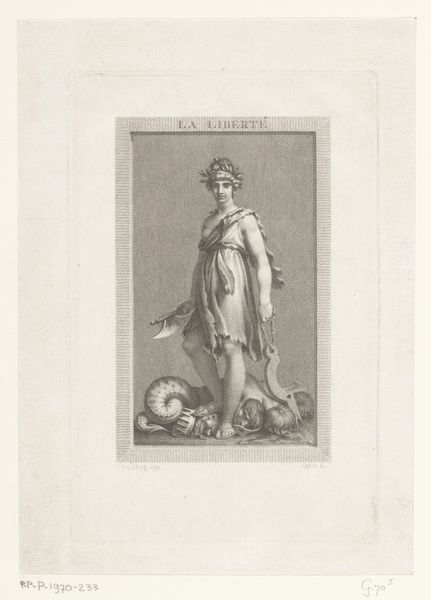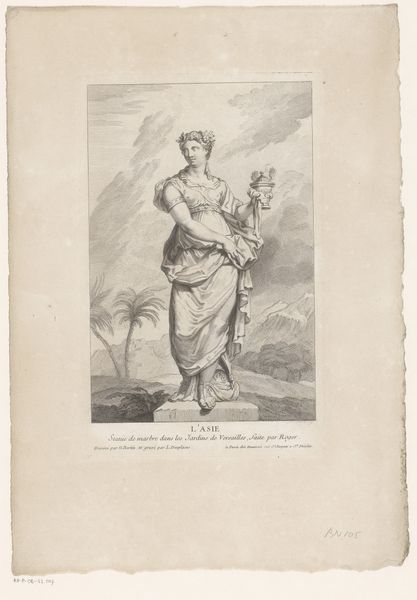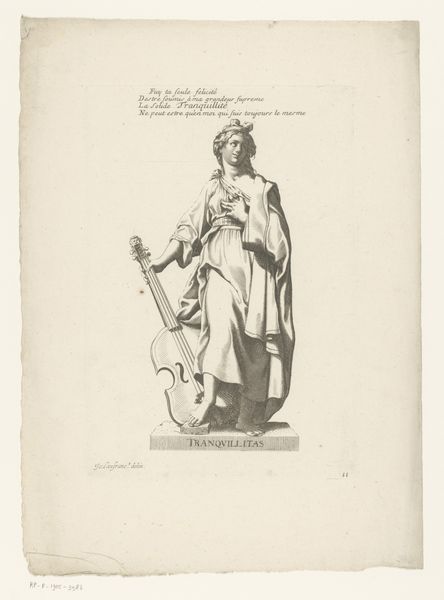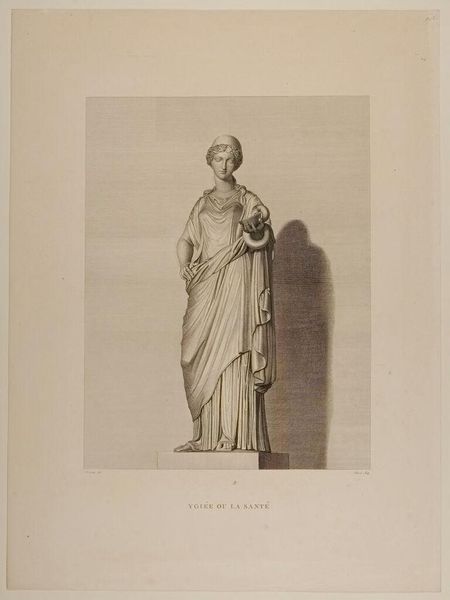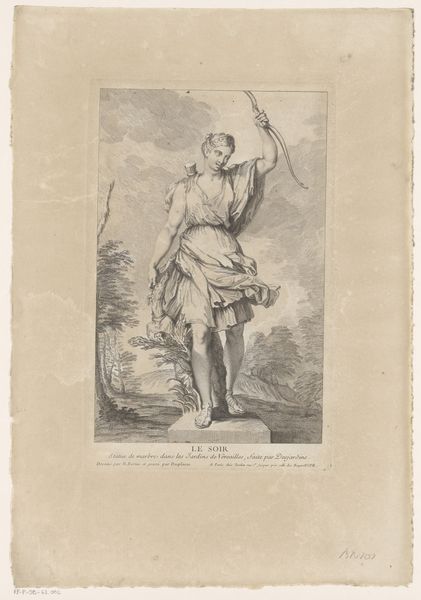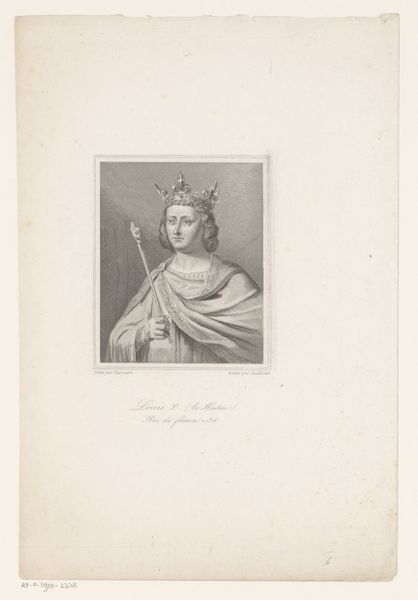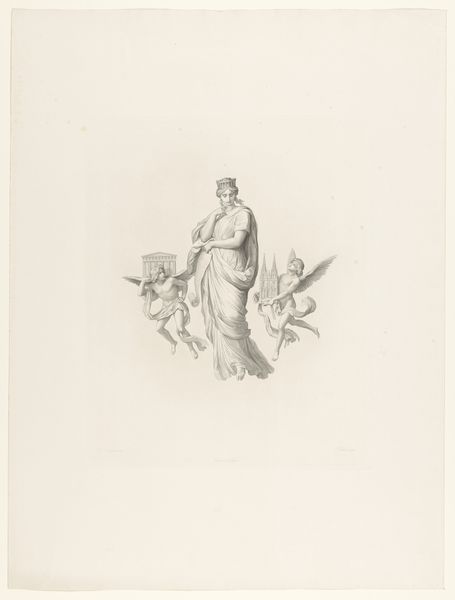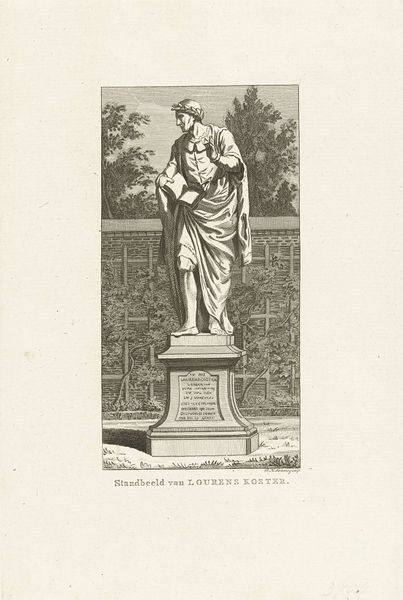
engraving
#
allegory
#
pencil sketch
#
old engraving style
#
figuration
#
romanticism
#
line
#
pencil work
#
history-painting
#
engraving
Dimensions: height 311 mm, width 236 mm
Copyright: Rijks Museum: Open Domain
Curator: Here we have "Vrijheid," or "Freedom," an engraving dating from 1849, by Auguste Paul Charles Anastasi. The allegorical depiction of liberty makes me think about its production context. Editor: It feels charged, doesn't it? Heroic, yet unsettling. I mean, look at the laurel wreath almost floating above her brow and how her stance dominates the crushed figures below. Curator: Right, let's delve into that. Anastasi's choice of engraving as a medium would have allowed for widespread distribution of this image. Prints like these were easily circulated, which played a significant role in disseminating revolutionary ideas across social strata. Editor: The line work is impressive – so fine! Yet, for a message about freedom, the rigidity of the lines seems a little…constraining. Is that intentional? Maybe the weight of historical oppression symbolized in its very technique? Curator: A keen observation! Considering the failed revolutions of 1848 that swept Europe, including France where Anastasi was active, it's easy to interpret his artistic labor in the service of a cause but with clear ambivalence. Look at the symbols of tyranny under her foot—a king's head and a ram’s skull... They tell us quite explicitly about the subject and political tensions brewing at the time. Editor: True, but the details distract a bit. They almost turn it into political propaganda. Maybe a broader appeal could have ensured more public appeal for the cause. Then again, those sharp lines underscore her authority... maybe this print wasn't only made to persuade. Curator: The social and economic disruptions wrought by industrialization were rapidly changing traditional artistic patronage models and pushing artists to find ways of addressing mass audiences while navigating new visual technologies and social movements. Editor: In a way, the technical mastery makes this 'freedom' feel less liberating. Almost imposed. A call to action, or perhaps an acceptance of how hard fought freedom can truly be. Curator: Exactly! "Vrijheid" highlights the convergence of artistic practice and social concerns, while complicating traditional art categories—questioning the hierarchy of fine art and craft in a period defined by intense political struggle. Editor: Thinking about the piece this way gives the figure in the image even more weight and gravity! Thanks for pointing out the historical production considerations. I won’t look at the print the same way now.
Comments
No comments
Be the first to comment and join the conversation on the ultimate creative platform.

